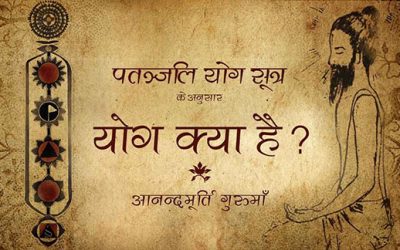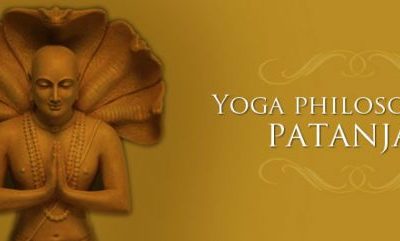Nirodha’s Adversary: Vyutthana Vyutthana, externalization of the mind, is the predominant characteristic of ordinary consciousness. The temptation might be to characterize nirodha as a mind in meditation and vyutthana as a mind tempted by distractions of the outside...
Patanjali’s Words: Nirodaḥ — Part 1
Rev. Jaganath, Integral Yoga Minister and Raja Yoga master teacher, has spent a lifetime delving into the deepest layers of meaning in Patanjali's words within the Yoga Sutras. In Patanjali's Words, his latest work-in-progress, Rev. Jaganath explores the Sutras word...
The Stages of Samadhi
In the Yoga Sutras, Patanjali speaks of the different stages of samadhi. The mere understanding of these different states is very little compared to the experience, but still, for the sake of understanding, Patanjali describes them. The first stage of samadhi is the...
The Heart of Concentration According to Patanjali
The aim of Patanjali’s Yoga system is to keep the mind one-pointed on any object or idea which would remind you of a higher idea that will broaden your outlook, elevate your mental attitude and, ultimately, your life. He encourages the student to take up any object...
Yoga and Aging Gracefully: A Journey
A few years ago, as I approached my 68th birthday, I begin typing words to describe what it feels like to age with Yoga as my support system. You see, I now have been practicing the art of Yoga for over five decades. It has always been the backdrop of virtually every...
Real Contentment
Santosha, the second niyama in the Raja Yoga system, means contentment. We also have a saying in the West that “Contentment is golden.” Why? Contentment is golden because it doesn’t depend on the things around you, the things that you have. Whenever I think of...
The Essence of Yoga Therapy
In this article, Swami Satchidananda, founder of Integral Yoga, and a trained naturopath himself, discusses the essential elements that comprise classical Yoga therapy. When I came to this country in 1966, I met Dr. Ramamurti Mishra (who became Swami Brahmananda), the...
The Yamas and Niyamas
Deborah Adele says that the yamas and niyamas (the ethical precepts that are the first two foundational limbs in Patanjali’s eight-limbed system of classical Yoga) offer us tools to help us stay centered in the midst of the ups and downs of life. She’s written a book...
Meditation & the Yoga Sutras
In this interview, Reverend Jaganath Carrera, an Integral Yoga master teacher and author of Inside the Yoga Sutras, explains how the heart of meditation can be understood through an unlocking of the term “nirodha,” which Patanjali uses in the second sutra of the Yoga...
Ishvara Pranidhana: The Bhakti Yoga of the Sutras
Our whole experience of life is based on the stories we tell ourselves about what unfolds. Swami Vivekananda describes it like an oyster making a pearl. A parasite gets inside the shell, and then the oyster reacts to the irritation by producing enamel around it, which...
Approaching the Yoga Sutras with Great Respect and Love
As a practitioner and as a teacher of Yoga, (the late) Mukunda Stiles pondered the Yoga Sutras for over three decades. He brings not just a philosophical understanding to the Sutras, but a deep personal experience that helps illuminate the text. In this interview from...
An Overview of the Yoga Sutras
In this article Yogacharya Dr. Ananda Balayogi Bhavanani gives us an overview of the four chapters of The Yoga Sutras of Patanjali—the foundational text for the classical Yoga (Ashtanga/Raja) system. This system is neatly unpacked by Dr. Ananda, who gives us key...
The Practice of Enlightenment
As a yogi, mainly in the Krishnamacharya lineage, and as a practitioner of Buddhist meditation for many years, Chip Hartranft’s work bridges the traditions of Yoga and Buddhism. His deep contemplation and study of the Yoga Sutras is evident in this interview,...
Chanting the Yoga Sutras in Sanskrit
To hear Dr. M. A. Jayashree chant the Yoga Sutras in Sanskrit is to be transported to the time when this great text was transmitted in the oral tradition. Her melodious voice, flawless pronunciation and classical articulation of the Sanskrit, replete with meaning and...
Vibhuti Pada: Entering the Oneness of Time
Ruth Lauer Manenti (affectionately known as "Lady Ruth" in the Jivamukti Yoga tradition) has been offering her students “dharma talks”—stories from her life that accompany her classes and represent the yogic commitments to ahimsa (non-violence), compassion and...
Inside the History of Patanjali & the Yoga Sutras
Dr. Edwin Bryant lived for years in India and was trained with traditional pundits. He has a background in Indian philosophy, and his translation and commentary on the Yoga Sutras is dedicated to contributing to the growing body of literature on Yoga by providing...
















